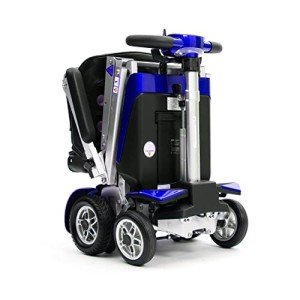How The 10 Worst Mobility Scooter FAILURES Of All Time Could Have Been Prevented
A Comprehensive Guide to Buying a Mobility Scooter
Mobility scooters have become a vital tool for lots of individuals looking to boost their self-reliance and mobility. With a large variety of models and functions available, picking the best mobility scooter can be daunting. This short article supplies a helpful guide to help consumers navigate their options, evaluate their needs, and make an informed purchase.
Understanding Mobility Scooters
Mobility scooters are electric automobiles developed for individuals who experience mobility difficulties. They are especially advantageous for senior citizens, those with impairments, or people recovering from injuries. Mobility scooters can vary extensively in regards to design, functions, and prices.
Types of Mobility Scooters
Before starting a purchase, it's vital to comprehend the different types of mobility scooters offered:
Three-Wheel Scooters:
- Generally more maneuverable in tight areas
- Lightweight and portable
- Perfect for indoor usage
Four-Wheel Scooters:
- Offer higher stability and balance
- Ideal for outside use over different terrains
- Typically have a longer battery life
Foldable/Portable Scooters:
- Designed to be quickly transferred and kept
- Can frequently fit in the trunk of an automobile
- Suitable for those who travel frequently
Durable Scooters:
- Built to accommodate bigger individuals
- Typically come with more robust functions for outside usage
- Usually equipped with bigger batteries for extended range
Aspects to Consider When Buying a Mobility Scooter
1. Weight Capacity
Select a mobility scooter that can support the user's weight. The majority of scooters have a weight limit varying from 250 to 500 pounds. It is crucial to guarantee that the scooter can accommodate the user conveniently.
2. Range and Battery Life
The range is how far the mobility scooter can travel on a single charge. Normal varieties vary between 10 to 30 miles. Think about the user's daily activities and pick a scooter with an ideal variety.
3. Scooter Dimensions
Think about the size of the scooter, including its weight and dimensions. A more compact scooter may be ideal for narrow hallways and tight spaces, while bigger designs provide additional stability and comfort.
4. Surface Capability
Examine where the scooter will primarily be utilized. If the user prepares to take a trip primarily on pavement, a lightweight design may be adequate. However, if the user requires to traverse gravel or unequal surface areas, consider a four-wheel scooter built for off-road use.
Top Features to Look For
Convenience
- Adjustable Seats: Look for scooters with cushioned and height-adjustable seats to make sure convenience during travel.
- Armrests: These enhance safety and support while navigating.
Safety and Visibility
- Headlights and Taillights: Essential for nighttime use.
- Turn Signals and Reflectors: Improve visibility and safety while on the roadway.
User-Friendly Controls
- Joystick or Drive Controls: These should be instinctive and easy to control.
- Easy-to-Read Displays: A control panel that reveals battery life, speed, and range can boost the user experience.
Additional Features
- Storage Compartments: These offer added convenience for carrying personal items while on the go.
- Weather Protection: Consider models with rain covers or windscreens if utilized in variable weather condition conditions.
Cost Considerations
When budgeting for a mobility scooter, rates can range anywhere from ₤ 500 to over ₤ 5,000 depending on the design, features, and brand name. Additional costs may include:
- Extended Warranty: Protects versus problems and can save cash in the long run.
- Accessories: Optional functions, such as upgraded seats, lights, or storage solutions.
Feature
Cost Range
Basic Models
₤ 500 – ₤ 1,500
Mid-Range Models
₤ 1,500 – ₤ 3,000
High-End Models
₤ 3,000 – ₤ 5,000
Funding Options
Numerous sellers use financing strategies, and some regional federal government initiatives might offer grants or support for those in need. Examine potential monetary assistance with community resources or mobility service companies.
Frequently asked questions about Buying a Mobility Scooter
What is the difference in between a mobility scooter and a wheelchair?
Mobility scooters are motorized and allow users to browse independently, while wheelchairs may require physical help or manual operation.
How do I keep a mobility scooter?
Regular upkeep includes checking battery life, cleaning the scooter, and checking tires and brakes. Always describe the user handbook for specific guidelines.
Can mobility scooters be used indoors?
Yes, numerous models are designed for both indoor and outside usage. However, three-wheel scooters tend to be much better matched for indoor navigation due to their tighter turning radius.
Are mobility scooters covered by insurance?
Some insurance coverage prepares cover a portion of the expenses for mobility scooters if they are considered medically necessary. Contact your service provider for specific details.
How quickly can a mobility scooter go?
Most mobility scooters have a maximum speed ranging from 4 to 8 miles per hour. Nevertheless, the suitable pace may vary depending upon local regulations.
Getting a mobility scooter can substantially enhance one's self-reliance and lifestyle. By comprehending Read More In this article , functions, and costs connected with mobility scooters, prospective purchasers can make well-informed decisions that fit their needs and preferences. Customization and extensive research study are essential to guaranteeing satisfaction with this essential investment.
